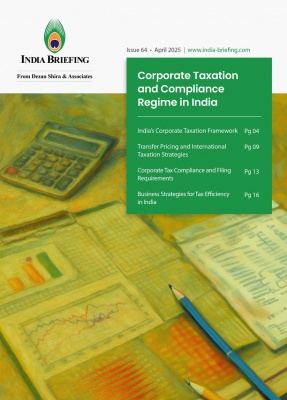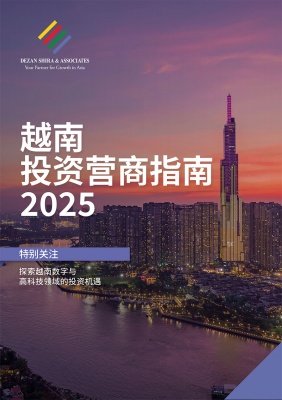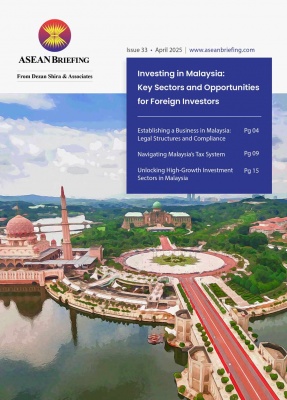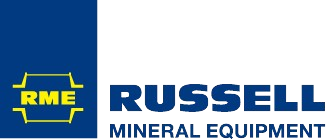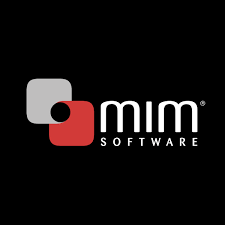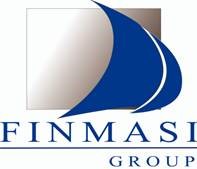
Our collection of resources based on what we have learned on the ground
VAT Reforms in China – Fundamentals of Announcement #39
Q&AIn addition to the Chinese governments work report, released on March 5, 2019, the State Administration of Taxation recently published ‘Announcement 39’ with effective from 1st April 2019.
The relevant regulation is yet to be released. Our Corporate Accounting Services Manager, Susan Ma, discusses taxpayer’s concerns in light of this announcement.
What should Taxpayer’s do when handling the second round of VAT rate reduction?
The recent reduction of VAT rates and change in policy is essentially the same as the previous round of rate reductions.
From a business’s perspective, there will perhaps be some negotiation from your buyers to use the previous VAT rate in order to get more input VAT. However, we believe, this should be balanced between both company’s benefit and buyers.
In our view, VAT rate might also be reduced further and streamlined to 2 rates in the coming year to enhance the competitiveness of Chinese business in the world. Taxpayer should consider how to face the re-negotiations that arises from policy changes.
From accounting, invoicing and tax filing perspective, the taxpayer should ensure all the operation is compliant and get supporting documents if it needs to be invoiced with the previous VAT rate.
Example
A and B are general VAT taxpayers, and both parties signed a contract in February 2019 according to which B would pay A after goods are received by A.
Taxpayer A delivers the goods to Taxpayer B (buyer) in March 2019, receipt of which was confirmed by B, but A issued the special VAT invoice in April. As the seller, A should issue the invoice with the rate of 16 percent rather than 13 percent because the tax liability was incurred in March.
With respect to tax filing, A should conduct VAT filing as the revenue of non-issued invoice in March and then do the tax filing in April accordingly because A issued the special VAT invoice in April.
As the buyer, because the transaction incurred in March, the invoice given by A is correct. B could use this invoice to credit output VAT after verification.
However, if the goods were delivered in April, which means the tax liability to A is in April rather March, A could not issue the invoice with the rate of 16 percent. As for B, if B received the special VAT invoice with the rate 16 percent, it is not the correct invoice for B and they should not deduct the input VAT ‑- this invoice could not be deducted while paying CIT as well.
How should input VAT be collected from purchasing passenger transportation services?
From April 2019, all input VAT associated with passenger transportation service (incurred by an employee for a business trip) may be used as credit VAT for all general VAT taxpayer.
The documents that qualify for this include special VAT invoices, VAT e-invoices, and qualified tickets. Clause 6 of Announcement 39 says that there are a series of requirements to qualify documents and there are different VAT rates for different tickets.
For compliance reasons, all copies of the qualified documents and a check list is required to compute input VAT.
However, systems do not allow for special VAT invoices to be issued to passengers for transportation services. Instead, companies have to collect all individual tickets and compute VAT one-by-one.
Businesses should also note that not all transportation invoices / tickets qualify for credit VAT, which means it may be time consuming and costly for internal accounting to get credit VAT for transportation services.
This may lead to companies underutilizing this policy. In our opinion, this would not be a good choice, especially if the business is expanding . .
Instead, we advise our clients to specify any transportation charges within their reimbursement files and to provide the ticket copies together with claimed report, thereby reducing the burden on internal accountants.
Alternatively, various expense apps may be used to collect all the information requisite when employees submit a reimbursement claim. The system could then generate the required the information automatically. The entire transaction and bill can be traced within system, which ensures accurate VAT calculations.
Who enjoys VAT ‘super credit’?
A qualified general VAT taxpayer (GTP) is granted an additional 10% of creditable input VAT as ‘super credit’ to offset against output VAT for the period April 2019 to December 2021. The measures aim to ease VAT tax burden on all the business sectors – especially since VAT rates for certain sectors, like the service industry, remains unchanged.
According to the bulletin, a taxpayer can enjoy this credit if:
- They are engaged in the postal services, telecommunication, modern services and lifestyle services
- The sales revenue from the afore-mentioned activities is more than 50% of total service during defined period for the first time in a year. (If GTP was registered before 1st April 2019, the defined period is from April 2018 to March 2019. If GTP was registered after 1st April 2019, the defined period is counted for the first 3 months from established.)
When you check the percentage of the indicated service, the revenue should include all business lines, including exports and cross-board service. However, when we calculate super credit, the corresponding super credit should not be included if it is an export or cross-board service.
According to Announcement 14 issued by SAT in March 2019, the taxpayer should submit their Declaration of Eligibility for super credit in the tax system and then enjoy the super credit policy after the approvals process. Otherwise, the relevant data will not be allowed to be inputted into the e-tax system.
The GTP may still be eligible for super credit the following year dependent on whether the sales percentage of qualified service revenue is still more than 50 percent.
How has the VAT rebate rate changed?
According to the Announcement, the tax rebate rate has also been updated to align with the latest VAT rate adjustment for those goods and service, which were subject to 16 percent or 10 percent before April 2019.
The adjusted rebate rate is as below for your reference.
|
Timing |
The rebate rate |
|||||
|
Before 1st April, 2019 |
0% |
5% |
6% |
10% |
13% |
16% |
|
After 31st March, 2019 |
0% |
5% |
6% |
9% |
13% |
13% |
Similar to when the VAT rates were adjusted last year, there is still 3-month transition period till June 30, 2019.
A company can still apply a rebated rate of 16 percent or 10 percent if the below criteria are met:
Condition 1: The goods or service were exported before 30th June 2019, and
Condition 2: The corresponded goods were purchased with 16 or 10 percent VAT rate, and
Condition 3:The applicable rebate rate is 16 or 10 percent according to the previous provision.
Otherwise, the taxpayer has to apply the new rebate rate even if the goods have been purchased using the previous 16 percent or 10 percent VAT.
Thus, tradzng companies should carefully consider the right time to arrange exports, shipping, invoicing, etc. to avoid applying the lower rebate rate (13 percent or 10 percent) even when the goods or services were purchased at a 16 percent or 10 percent VAT rate. The regulated timing is as listed in bulletin 39:
|
|
Export |
Timing |
|
1 |
Export declaration via the custom except below No. 3 |
The export date list on the custom clearance sheet |
|
2 |
Export declaration without via custom, cross-board service |
The date of Export invoice |
|
3 |
Export in / via bonded area |
The date on the records of outbound goods |
What is the refund of input VAT?
In the current VAT system, the taxpayer (GTP) cannot claim refunds of unutilized input VAT, i.e. when creditable VAT is higher than output VAT, the excess input VAT is only carried forward to offset the output VAT in the next period.
In 2018, certain industries were granted a one-time refund of excess input VAT if certain conditions were met.
In the latest announcement, the refund pilot program is expanded to all the industries from April 2019 if the taxpayer is eligible for the refunds.
Of course, the taxpayer should meet the requirements that are outlines in Announcement 39 and the SAT Announcement #20 issued by SAT in 2019. T
The formula of refundable of unutilized input VAT is as below:
|
Newly increased unutilized input VAT * input VAT ratio X 60% |
CONTACT US
< BACK TO LIBRARY
Subscribe to receive latest insights directly to your inbox
Subscribe NowOur Clients
Discover our esteemed global clients across diverse sectors. We believe in providing our clients with exceptional service and a commitment to being their partner for growth in Asia.
See what our clients say about us